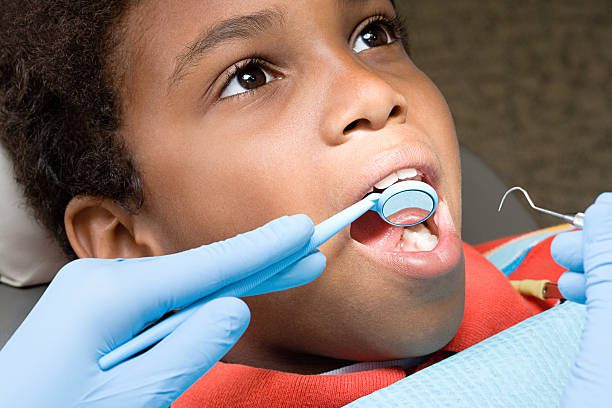Cavities in Care: Medicaid Dental Coverage Presents Ongoing Challenges for Children
In 2007, Demonte Driver, a healthy twelve-year old boy passed away from an untreated toothache. Demonte’s family encountered many barriers that prevented him from receiving care that would have saved his life – a simple tooth extraction. Demonte was a Medicaid Beneficiary but dental providers that accepted Medicaid were extremely difficult to find in Maryland. By the time his mother was able to access dental care, an abscess had formed in the twelve-year-old’s brain which led to six weeks in the hospital, two operations, and ultimately his death. While children enrolled in Medicaid in Maryland have seen improved access to dental care, children in other states have not been so lucky despite federal requirements mandating dental coverage.
In 1967, the EPSDT (Early and Periodic Screening, Diagnostic and Treatment) program was enacted by Congress to ensure accessible health care for children under the age of 21 who are enrolled in Medicaid. They are entitled to “the right care to the right child at the right time in the right setting.” If Demonte had received the right care at the right time in the right setting, he would be alive today.
One of the key components of EPSDT requirements is the coordination of care that is provided for enrollees. Coordination of care ensures a patient-centered experience that is “comprehensive, coordinated, accessible and committed to quality and safety.” When I began writing this blog, I had every intention of including dental success stories over the last 60 years, unfortunately, successes are few and far between and rather failures with EPSDT abound.
In Michigan, Medicaid-eligible children can enroll in Delta Dental’s Health Kids Dental plan. The program’s standards include: timely access to care, including an initial appointment within eight weeks of request; preventative services within six weeks of request; routine care within 21 business days of request; urgent care provided within 48 hours and emergency dental services provided immediately, 24 hours a day, seven days a week. This was not my experience with the program.
From 2018-2020, I worked at the Telamon Corporation Michigan Migrant Head Start Program in various positions to ensure the health of enrolled children. A significant portion of my work involved developing community partnerships with Federally Qualified Health Centers committed to meeting EPSDT requirements. The greatest need for assistance was access to dental services for relief of pain and infections, the restoration of teeth and general maintenance of dental health (the biggest obstacle at Telamon). The waitlist for dental exams became so long that by the time children had exams, they also often needed surgery.
Because there were so few dental offices and dentists with privileges at hospitals that would accept Medicaid, the waitlist for surgery was longer than the amount of time that many of the migrants stayed in MI. If they were able to get an appointment before they migrated, they would often have to travel up to three or four hours to the nearest hospital, requiring their parents to take a full day off of work without paid time off, and often at the risk of being terminated from their position. Historically Medicaid beneficiaries in Michigan do not find themselves unique in terms of delayed dental care and there is no indication that these realities have improved over the last three years/during the pandemic.
In the case of Demonte Driver, his death showed just how disjointed the medical and dental systems operated for Medicaid eligible children. Only one-third of all Medicaid-enrolled children in Maryland were receiving dental treatment. Outrage sparked by Driver’s death led to quick and significant change throughout the state. By 2011, Pew Research released a report that showed a nine percent increase in care (from 33 to 42 percent) of Medicaid-enrolled children in Maryland received dental treatment over four years.
When states go through tragedy, as in the case with Demonte Driver, it can lead to change and thus we find better care for Medicaid beneficiaries (at least temporarily). How can such justices be maintained over time? How can we swim upstream? How can states proactively enact legislation and programs, and ensure attractive compensation for providers from the very beginning? The qualification for change, accessibility and equity should not be the death of a child. We need to do better and ensure the promises enacted in 1967 become a reality today.






